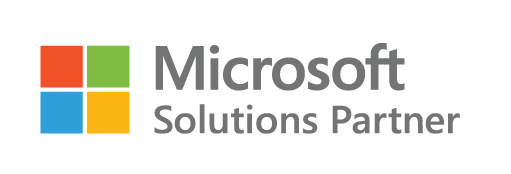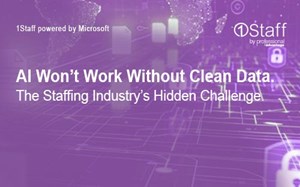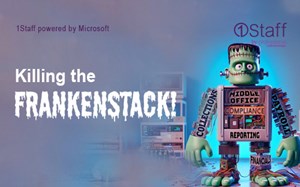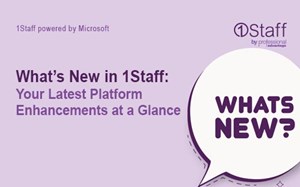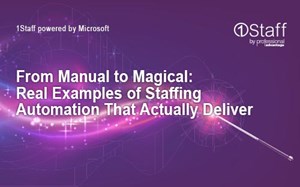
What is Microsoft Power BI?
Power BI is Microsoft’s next generation business analytics tool—embedded within Microsoft’s business applications solution—that comprises several technologies originally developed for Excel, such as Power Pivot and Power Query. Power BI then goes beyond these existing Excel capabilities, adding functionality for rich interactive visuals and dashboards with KPIs.
With Power BI, you can extract and transform data from multiple data sources and combine it into one data model that you can then use to create your reports. Data from multiple sources can be scheduled to refresh automatically or on-demand.
Power BI is packed with amazing collaboration, sharing, and mobile features and is deeply embedded in Microsoft’s business application solutions. So, if you’re using Microsoft Office 365, then Power Apps or Microsoft Flow can be configured to tap into O365 data, refresh datasets stored in OneDrive or SharePoint, and set alerts or send emails. These are just a few examples; there are many ways Power BI can integrate with other applications and if you are thinking about Power BI from an IT perspective, it is truly an amazing tool to leverage those technologies.
The Value of Microsoft Power BI
Power BI + Excel
Has your organization been using Excel for your reporting requirements? Microsoft Power BI is the next level of reporting over Excel. Power BI builds on Excel capabilities by adding scheduled data refresh, data visualizations and single view dashboards for multiple ranges of data and sources.
Analysis & Visualization
Get a single point of view with Power BI’s ability to combine data from hundreds of data sources. Built-in functionality allows users to slice, dice and transform data using built-in or custom visuals. Then choose what and when to publish and share insights.
Collaboration & Access
Power BI allows users to publish and share their content with colleagues inside and outside the organization. Users can then access real-time data from any location or device subject to their individual user permissions. Preset KPI triggers monitor data changes and send users alerts as necessary.
3 Step Self-Service BI
Frequently Asked Questions for Microsoft Power BI

What are the components of Power BI?
There are three main components to Power BI, with each component serving a different purpose:
- Power BI Desktop: Power BI desktop is the authoring tool of Power BI, used by the report designers to access, transform, and model the data, create measures, and build the data visualizations. This application is free to download and supports Windows operating systems.
- Power BI Service: The Power BI Service component (https://app.powerbi.com) is the cloud based central hub of the Power BI solution where users access and interact with their Power BI reports. Users can create dashboards from their reports and can use the self-service functions to edit and create new visualizations. Crucially, users can then share the insights found and collaborate with co-workers on reports and dashboards.
- Power BI Mobile: The Mobile component of Power BI allows users to interact with their published reports using their smartphones or tablets via a downloadable app. It enables access to reports on the fly, anywhere, at any time. You can personalize data alerts and get real time data updates. Power BI Mobile supports Windows, iOS, and Android devices.
Can I use Power BI for Budgeting & Forecasting?
Power BI is a powerful interactive data visualization and analytics tool that can draw data from a wide variety of sources including budgeting and forecasting data that can reside in an ERP system and/or Excel. In many cases, Excel is still the tool of choice for an organization’s planning and budgeting process especially if there is not a lot of complexity and minimal requirements in the model structure.
Where the level of complexity in a planning process increases, there are further considerations in choosing an appropriate tool especially where Excel is no longer a workable solution. This can include situations where multiple planners are involved and there are multi-level organizational inputs to be considered.
Power BI can function as an aggregation and modelling tool, to aggregate separate planning datasets (created in Excel or other systems) together with data actuals and create a consolidated planning report. There are still some downsides to this approach, especially uncovering errors when using Excel and implementing top down changes.
The most effective method for a complex planning process is to implement a single central data model solution that enables the user to easily read and write back to a data model totally customized to how the organization operates. This enables a single approach to all aspects of planning whether it be sales forecasting, operational budgets, cashflow, or workforce and asset planning. Professional Advantage implement these type of corporate performance management tools that can be used either standalone or in conjunction with Power BI’s reporting capabilities.
What is the difference between the Power BI Desktop and Power BI Service (PowerBI.com)?
The Power BI Desktop is the complete report authoring tool for report designers. It is downloaded as a free application and installed on a local computer. The desktop allows you to connect to different types of data sources and then transform it in a data model. The final part of the report creation process is to add visuals based on the data model.
The Power BI Service is the cloud-based service where users view and interact with the reports. Report designers use the Desktop application to publish the Power BI reports to the Service. Users in the Service can edit the reports and create visuals based on the existing data model and also share and collaborate with co-workers.
There are a small number of areas where the Desktop and Service overlap. However, most implementations use the Power BI Desktop to create the reports and then use the Service to distribute the reports with others.
How does the Power BI service (PowerBI.com) connect to my on-premise data sources?
Microsoft has created an on-premise data gateway that allows the quick and secure transfer of data between on-premise data sources and the Power BI Service. In this way, organizations can keep their data sources locally on their network and then securely use that data for Microsoft cloud services.
Does Power BI produce paginated reports?
In June 2019, Microsoft introduced paginated reports in Power BI. This allows Power BI developers to create formatted pixel perfect reports in the Power BI Service. Paginated reports allow organizations to create fixed layout reports for printing and pdf creation. Paginated reports within Power BI is currently only available for organizations licensed for Power BI Premium. Please contact Professional Advantage if you would like further information on paginated reports and Power BI Premium.
Is Power BI free? How is Power BI licensed?
he Power BI Desktop is a free download and you can register for the Power BI Service at no cost (with a business email address). This enables anyone to easily start building reports. The Power BI Service becomes a paid requirement when you wish to share and distribute reports to other users within your organization. Each user will require a Power BI Pro license and this is activated within the administration of Office 365.
How is Power BI different from traditional BI implementations?
Power BI is part of a new wave of next generation Business Intelligence (BI) tools. In comparing them to traditional BI implementations there are a number of differences, but the two key differences are: Cloud vs On-Premise and Self-Service vs Guided Analytics.
Power BI has been solely developed by Microsoft as a cloud-based offering often known as Software-as-a-Service (SaaS). This means that the Power BI Service is hosted on Microsoft’s Azure servers and accessed over the internet. The benefits over a traditional on-premise solution are that there are no upfront hardware or ongoing software upgrade costs, it has faster implementation, lower licensing costs, and is mobile and scalable.
Another feature of Power BI and other next generation BI tools is Self-Service functionality. This allows an end user to extend the existing reports and create their own visualizations based upon the data model in the report. Key benefits are lower costs and faster development cycles. Self-service tools also generally have a rich user experience which aids data discovery and tends to increase user adoption. Traditional BI tools are generally described as guided analytics which do not have any self-service features and must be changed by report developers.
What is the Power BI Report Server (and how does it differ from the Power BI Service)?
The Power BI Report Server is the on-premise equivalent of the cloud-based Power BI Service combined with a Microsoft SQL Reporting Services server. It includes tools to publish Power BI paginated and other reports accessible via a web browser or mobile device. The Power BI Report Server can also be thought of as the next generation Reporting Services (SSRS) product.
Licensing of the Power BI Report Service is either via Power BI Premium or a SQL Service Enterprise Edition license with Software Assurance.
What is Power BI Premium and Embedded?
Power BI Premium is Microsoft’s Business Intelligence and Analytics platform aimed for larger organizations. Whilst Power BI Pro is based on individual licensing, Power BI Premium is licensed with dedicated capacity which enables reports to be published broadly across the entire organization without the need to license individual users.
Power BI Premium allows organisations to scale performance with dedicated hardware and capacity, and the ability to maintain on-premise Power BI reports with the Power BI Report Server.
Power BI Embedded is a solution that allows application developers to embed Power BI reports within their applications. It is aimed at software developers and independent software vendors who wish to provide embedded analytics and visuals within their application without having to develop the core analytics engine. There is no end user licensing requirement for Power BI Embedded as pricing is based on a per hour rate for a chosen capacity.
Does Power BI have an app store or marketplace?
The Power BI Desktop and Power BI Service includes a suite of standard visuals used to create visually rich reports and dashboards. In addition, Microsoft, third party organizations, and community members create additional visuals for the wider public benefit. These custom visuals can be downloaded from the Microsoft AppSource marketplace and imported into a Power BI report. Microsoft has quality tested and approved these Power BI visuals. To import a custom visual from within Power BI, go to the ‘Visualization’ pane and select ‘Import from AppSource’.
Is this solution the right fit for my business?
At Professional Advantage, we like to give our clients the right options. Our technology experts take the time to listen to and discuss your organization’s unique business requirements and then make their recommendations based on industry knowledge and years of experience implementing solutions across a variety of businesses.
Want to find out more about Microsoft Power BI for your Staffing Agency?
1Staff boosts efficiency, increases productivity, generates insights, maximizes margins, and improves cash flow. Whether you are looking for a full suite of functionality, or a robust front office or back office to integrate with your existing solution, 1Staff has you covered.
More from 1Staff Staffing Software
